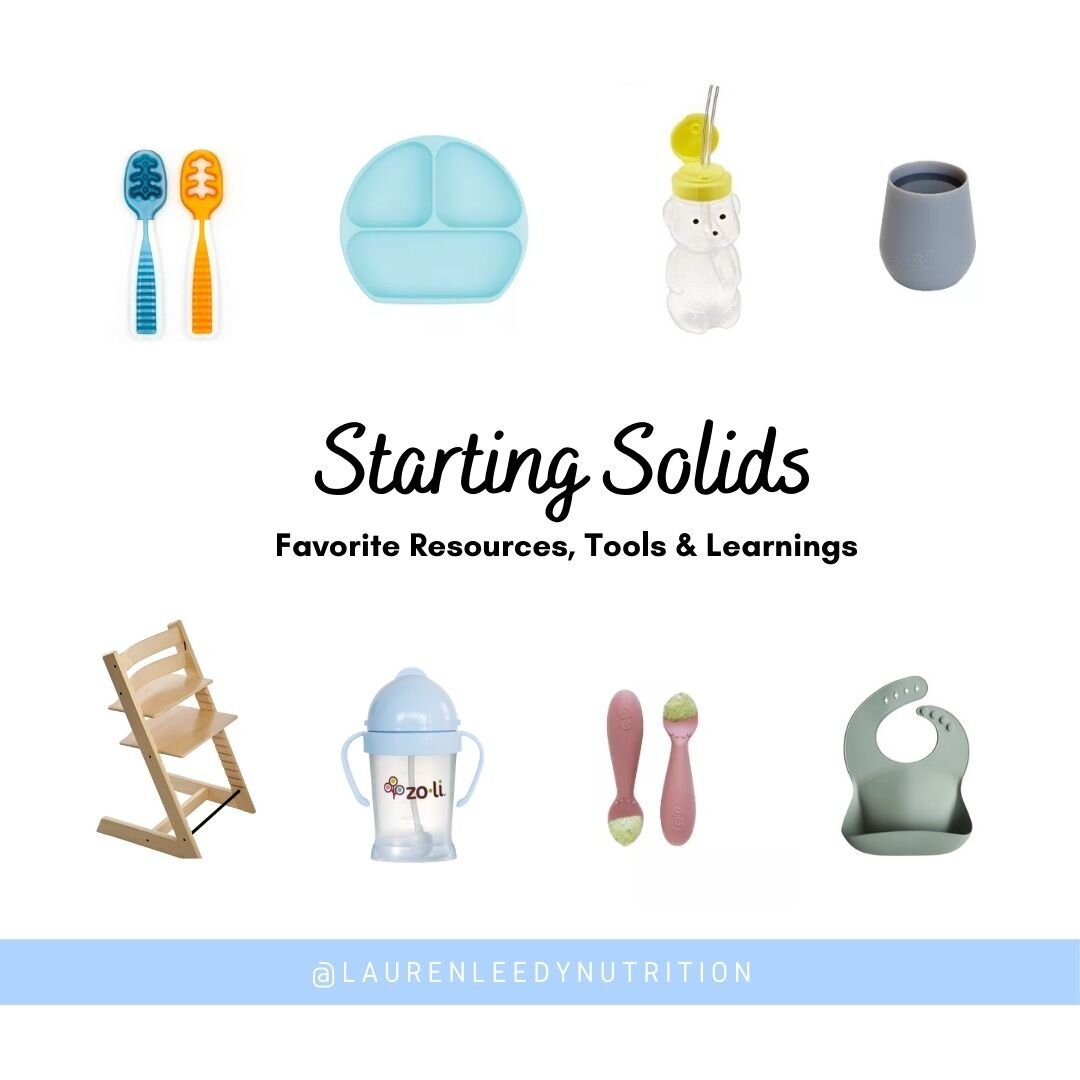Parenting: Starting Solids
Feeding your baby can feel incredibly overwhelming, especially with the amount of information available online. A lot has changed since I practiced in pediatrics five years ago. Baby led weaning (I prefer to call it baby led feeding) has become increasingly popular, and while we did some purees, we primarily used this approach with our son. After recently navigating this myself, I wanted to create a post/guide for this community to start with. I’m sharing my favorite resources, tools and learnings.
Top Resources
Feeding Littles - Course & Instagram; l I took their course and it was an incredibly helpful place to start.
Solid Starts - Website & Instagram; They have an incredible database that reviews how to serve almost any food based on your child’s age and oral/motor development.
Favorite Tools
Stokke Tripp Trapp Highchair- As I got into feeding my son I learned more about the importance of proper ergonomics and when cleaning up after 3-4 meals/snacks daily I valued how easy this was to clean. I ended up selling our original high chair and getting this one. Yes, this is an investment- I highly recommend checking out OfferUp and setting a search alert as these come up frequently.
Bumkins Silicone Plate- Initially, I didn’t find a plate was needed as I would just serve 2-3 items in strips directly on the tray. As solids started to comprise a larger proportion of David’s intake, I started to use divided plates. I love the EZPZ Mini Mat but it didn’t fit well on the Tripp Trapp tray and so it was easily picked up (and thrown/fed to the dog). The Bumkins silicone plate actually sticks and fit the tray perfectly. It’s size (and portion divisions) are more appropriate for an older child but due to its “stickiness,” I prefer it. If you’re able to pull your high chair up to your table (without using a tray), I’d go for the EZPZ Mini Mat.
Mushie Bib- We started with the Bapron bib, but ultimately I came to prefer a bib that could be easily washed and had a “trough” to catch everything that missed David’s mouth. I also liked that this one sits more on the shoulders then around the neck.
EZPZ Spoons- These worked very well for both self feeding later on and when we occasionally spoon fed David purees in the beginning.
Num Num GOOtensils- These were a favorite for offering loaded spoons of naturally pureed foods in the early days of feeding. For example, we would put hummus or yogurt on one of these and place it on David’s tray for him to self feed.
EZPZ Tiny Cup- Until you try it, it might seem impossible to imagine a 6-7 month old drinking water from an open cup. With practice, it will come. Feeding therapists recommend starting with an open cup for oral motor development.
Zoli Bot & Mr. Juice Bear Straw Cups- After an open cup, feeding therapists and dentists alike recommend using straw cups and avoiding sippy cups and modified open cups such as the 360 cup. We started with Mr. Juice Bear to teach David how to use a straw cup (you can squeeze its belly to help bring the water up through the straw). Once he had this down we moved to the Zoli straw cup for everyday use.
Learnings
1) Don’t give up on any foods- offer, offer, offer! It can take a baby more than 15 times to accept a new food. Babies (and children) will often go through “food jags” where they suddenly start refusing a food they previously enjoyed. It’s important that this food continue to be offered, even if it means it will end up in the compost 90% of the time.
2) Always offer one safe food- When offering new foods, it’s helpful to ensure there is one food on baby’s plate that he or she has accepted in the past. This can help them to get started with the meal and increase the likelihood they will try some of the other foods. Additionally, it will provide an option to ensure they don’t go hungry without you offering an alternative (which can teach baby to continually refuse food in anticipation of a better option).
3) Don’t short order cook- Ultimately, you want your child to be accepting of many different foods and able to eat a meal in any situation. Make it easier for yourself by offering your child modified versions of what you’re eating. As they get older, this will become easier.
4) Keep it simple- there’s no need to plan elaborate menus or do a ton of food prep. I keep a few items on hand at all times that I know I can use to augment what we are eating or if what we are eating is not suitable (example something raw/undercooked or prepared with honey).
5) Avoid the “Clean Plate Club”- As frustrating as food waste can be, forcing a child to eat something or offering rewards for finishing a meal can only lead to future food refusal and a poor relationship with hunger and fullness cues. Sometimes you may have to refill your baby’s tray/plate multiple times, while other times he or she may not touch a thing. This is normal.
